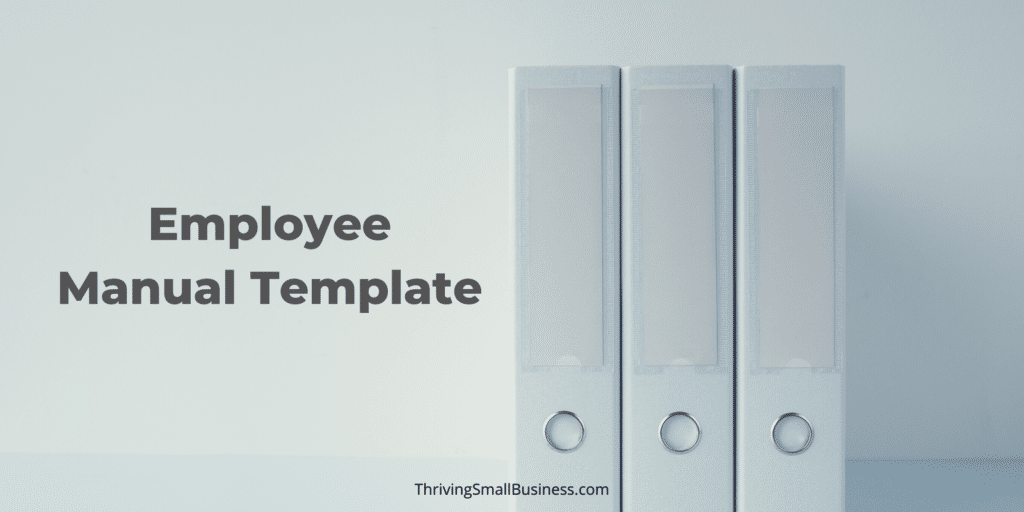Employee Manual Template
Estimated reading time: 3 minutes
As a small business begins to grow and identifies the need to hire employees, it is faced with answering employee-related questions.
When there are only a few employees in an office, it is not a big deal, and being flexible with benefits and work-related expectations is ok.
However, once the employee population increases, it is important to be able to manage the human resource function and document business practices as they relate to worker benefits, behavior, and performance expectations.
The reason it is important to have a written policy is to ensure all employees are treated the same and that there are no discriminatory decisions made in regard to benefits or expectations for employees.
There are many legal requirements when hiring employees that should be incorporated into the management process.
Every state has different laws so it is always wise to consult a labor attorney before formalizing any policy.
But as a starting point, these are some areas that might be covered in an employee manual or handbook.
Manual Sections
Welcome
This is an introduction to the organization. This section describes the history, mission, vision, values, and strategy of the organization.
Employment Classifications
This is where you identify the different classifications of employees and what benefits are offered to each class.
For example, regular full-time, regular part-time, and irregular part-time classifications.

The number of hours required for each classification is also important to document.
Employment Policies
This section gets anything that is related to the employee’s performance, for example:
- Workweek schedule – Clarify the hours of operation and flexibility in office work hours. For instance, if you offer flexible hours, you would state that an 8-hour shift can be worked anytime between 6 am and 6 pm.
- Recording time worked – Explain the process and expectations for recording hours worked.
- Paydays – How often do employees get paid?
- Paychecks – Do employees receive paper checks or direct deposits?
- rest periods – specify the expectations and the times that employees can take breaks. For instance, breaks are from 10:30 am and 2:30 pm. The breaks are for 15 minutes.
- meal breaks
- introductory period
- performance appraisal
- termination
- immigration law compliance
- equal employment opportunity
Employee Conduct
This is where the organization’s expectations for conduct are communicated. For example, policies on:
- harassment
- attendance
- standards of conduct
- confidentiality expectations
- performance management
- employee competencies
- smoking
- selling and solicitation
- safety
- security
- substance abuse
- violence in the workplace
Employee Benefits
This section lists all of the benefits the organization offers employees, for example:
- paid leave
- holiday pay
- bereavement
- jury duty
- voting time
- unpaid leaves
- family medical leave (FMLA)
- military leave
- worker’s compensation
- expense reimbursement
- education assistance
- medical and dental insurance
Other Policies
This section covers miscellaneous policies that are not covered in any above section, for example:
- electronic mail
- computer software
- grievance resolutions
- employee assistance and coaching.
Keep in mind this is a template to use as a starting point.
Many of these policies become more important the larger an organization becomes.
The advantage of having written policies and distributing them to employees is that everyone is on the same page and understands expectations and consequences for not adhering to policies.
This template can be used as a starting point in drafting your internal policies, but reviewing written policies with an attorney is advisable to ensure they comply with state and federal laws.






